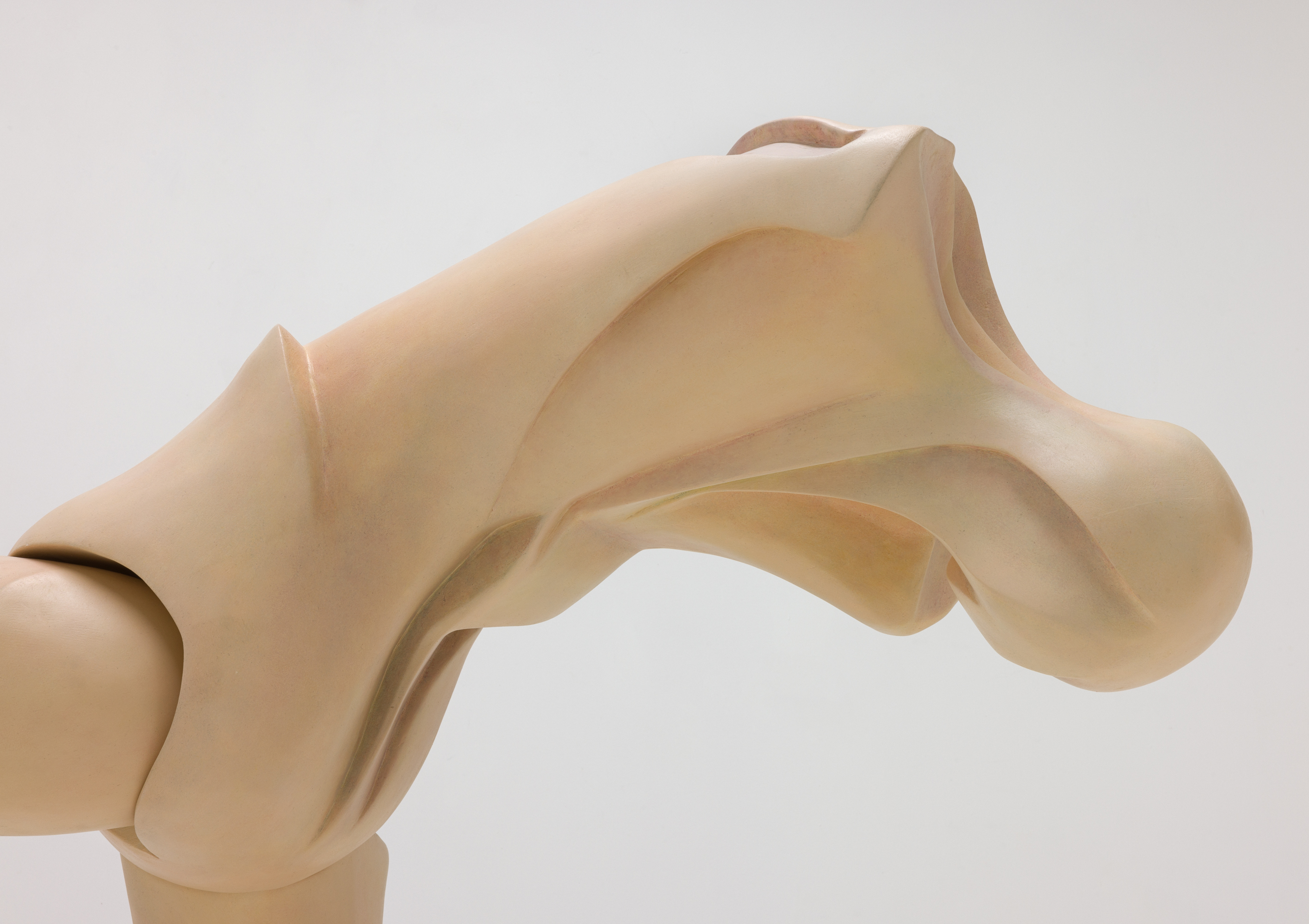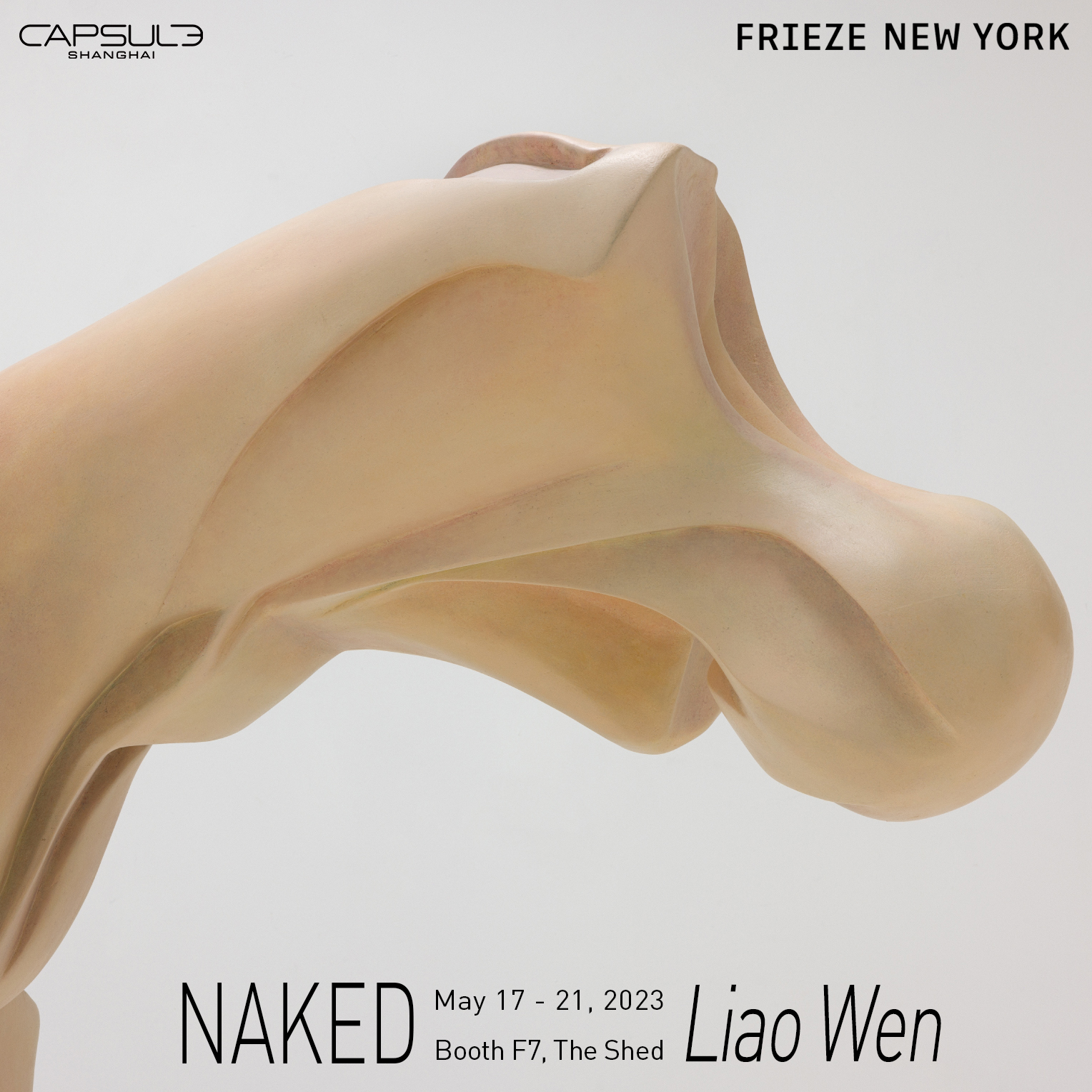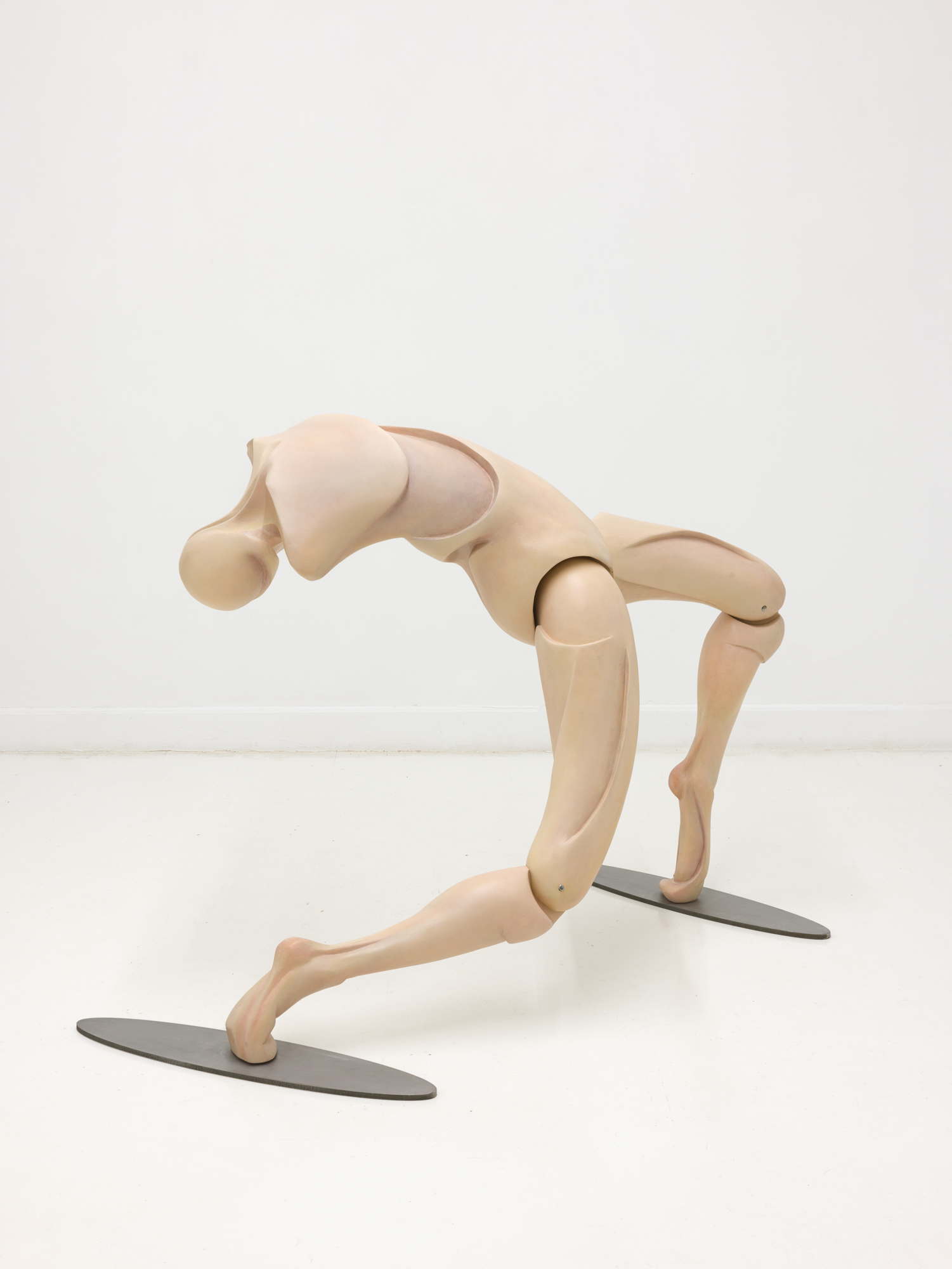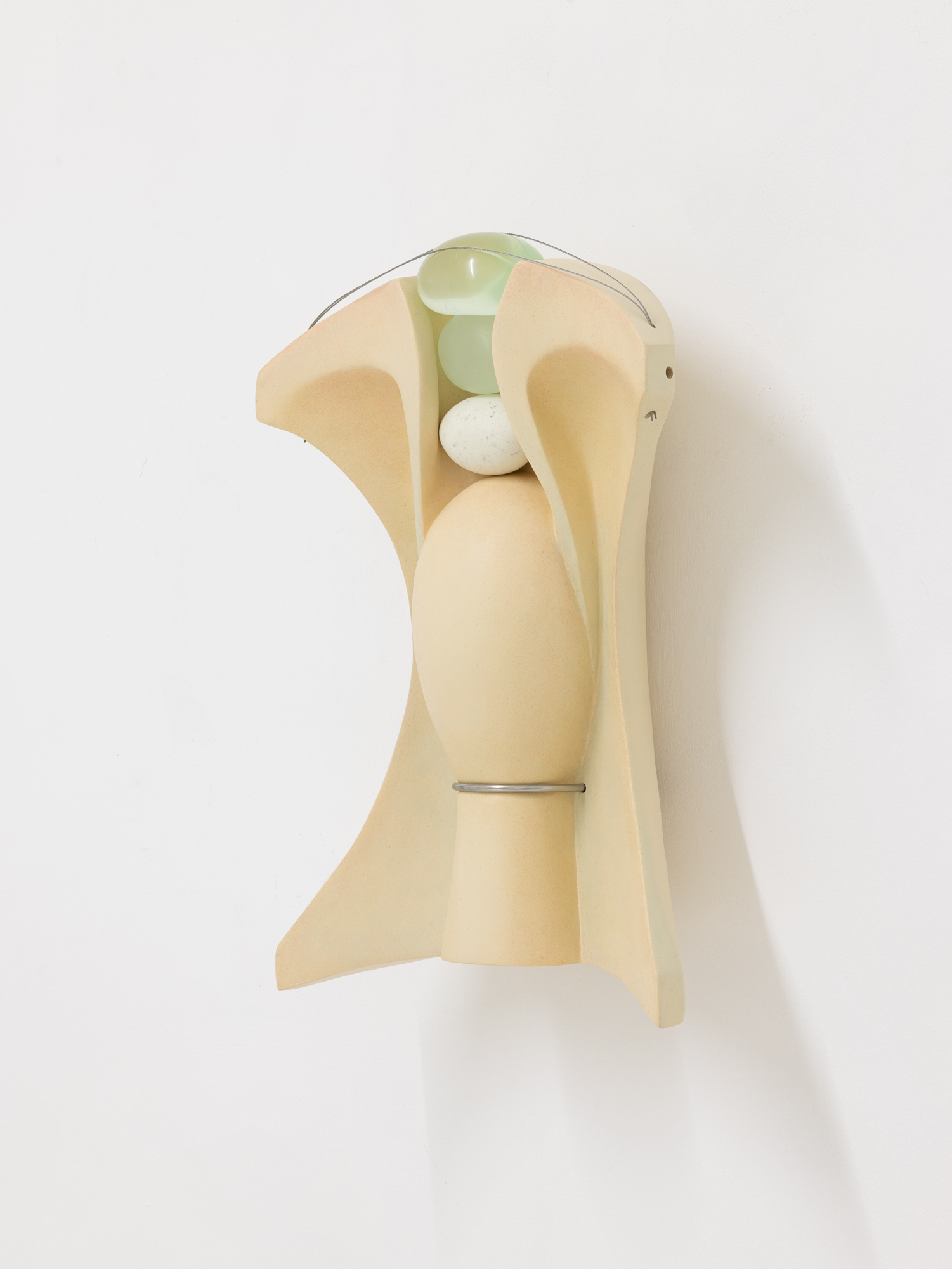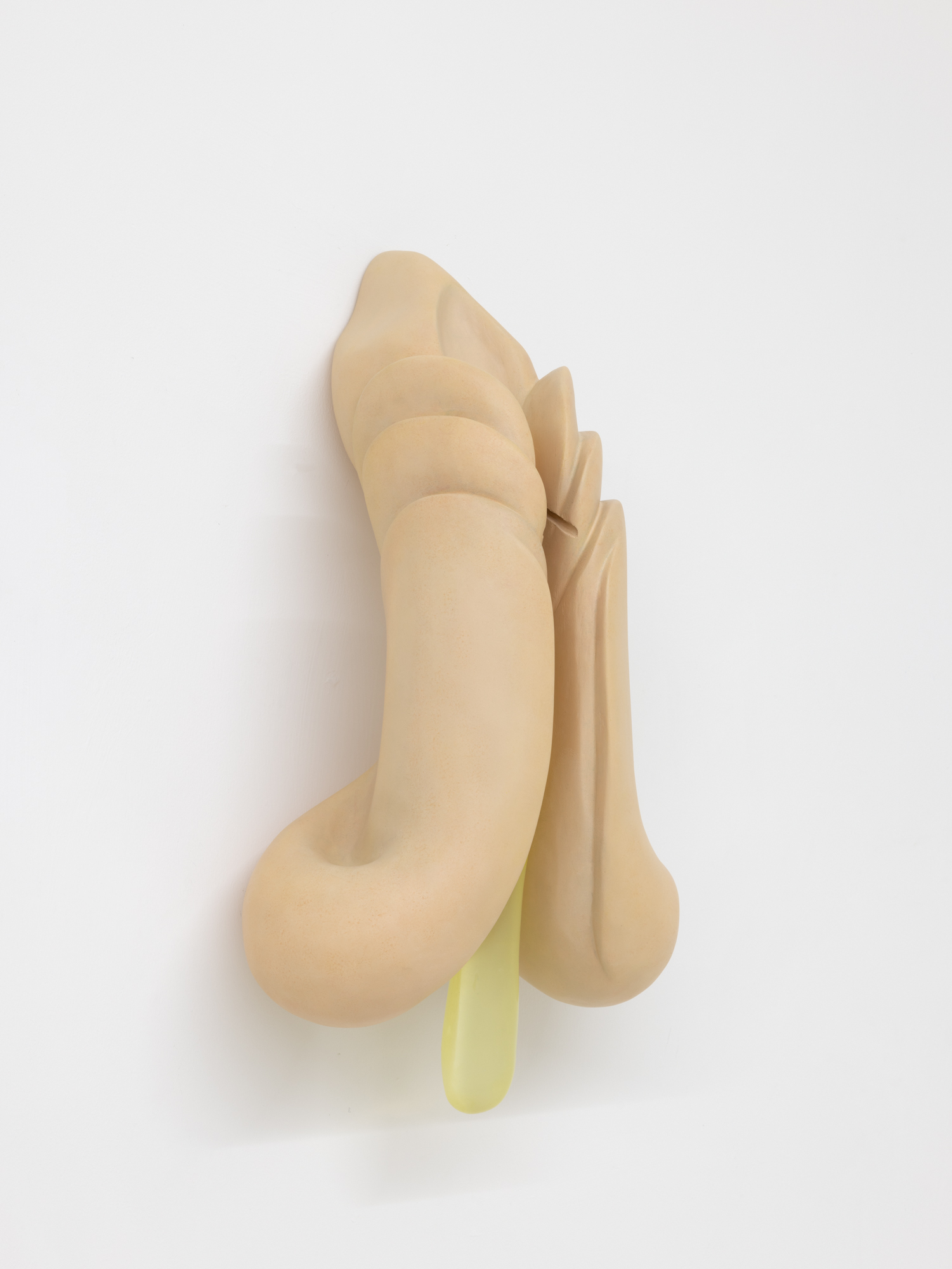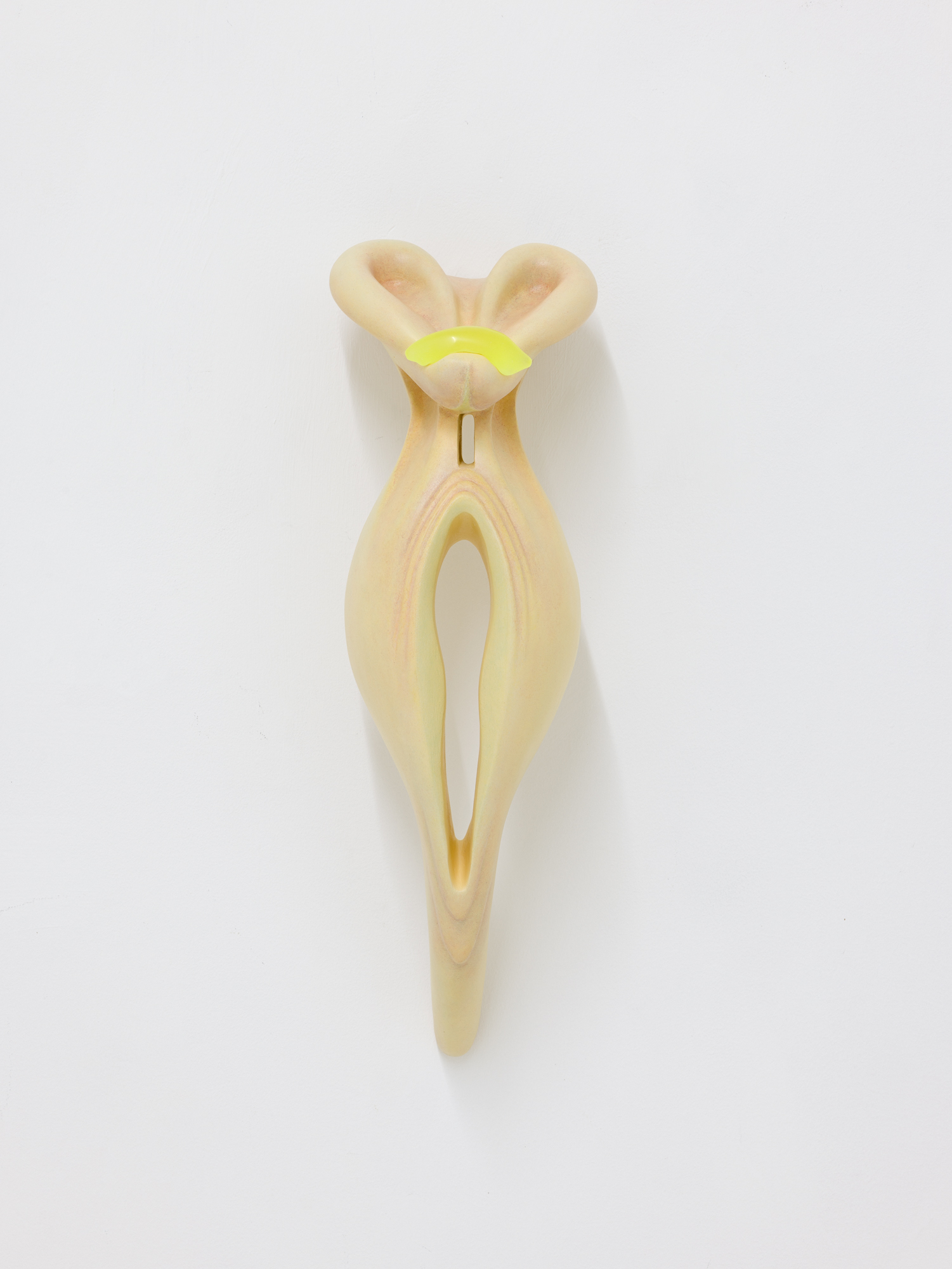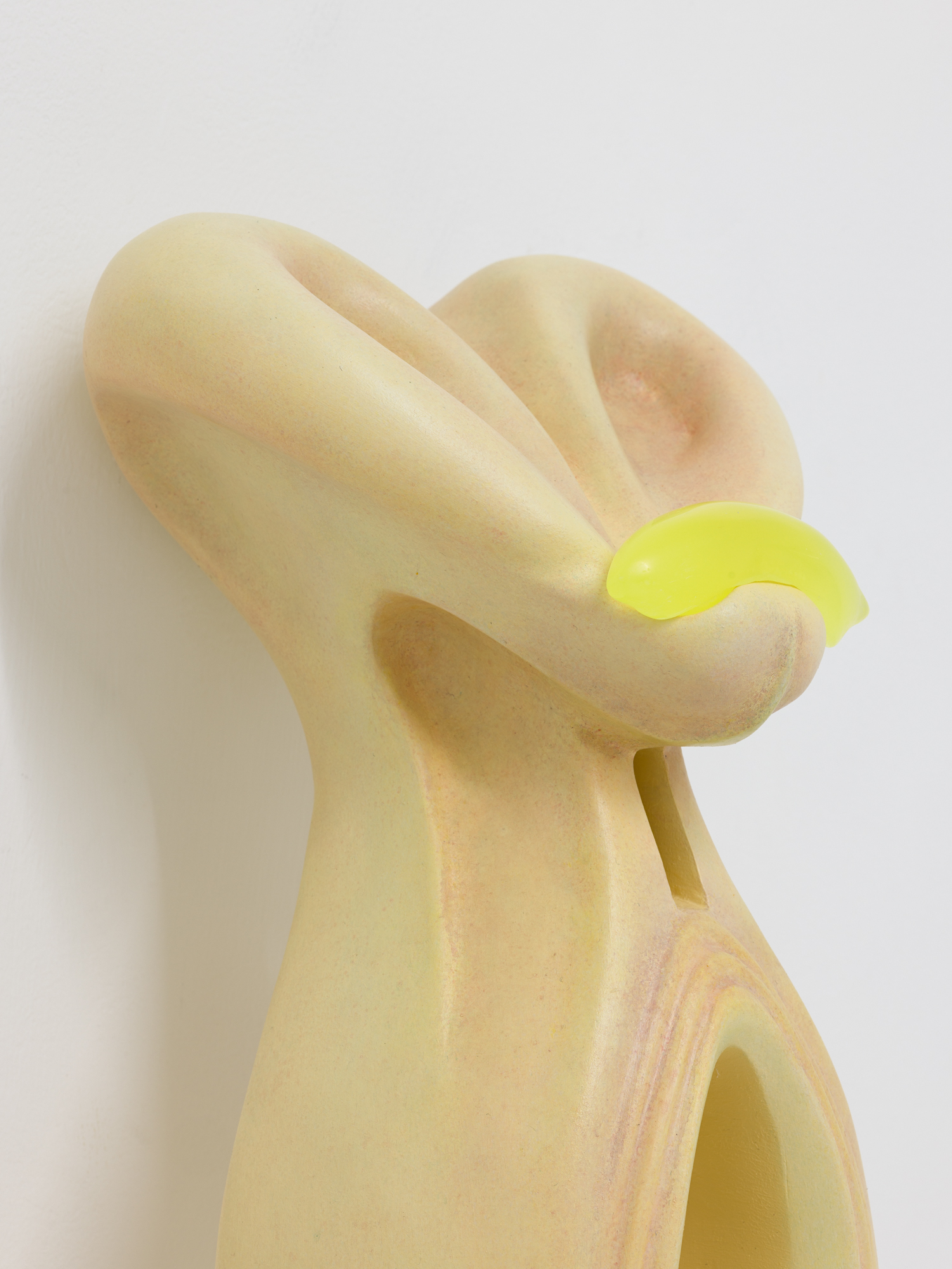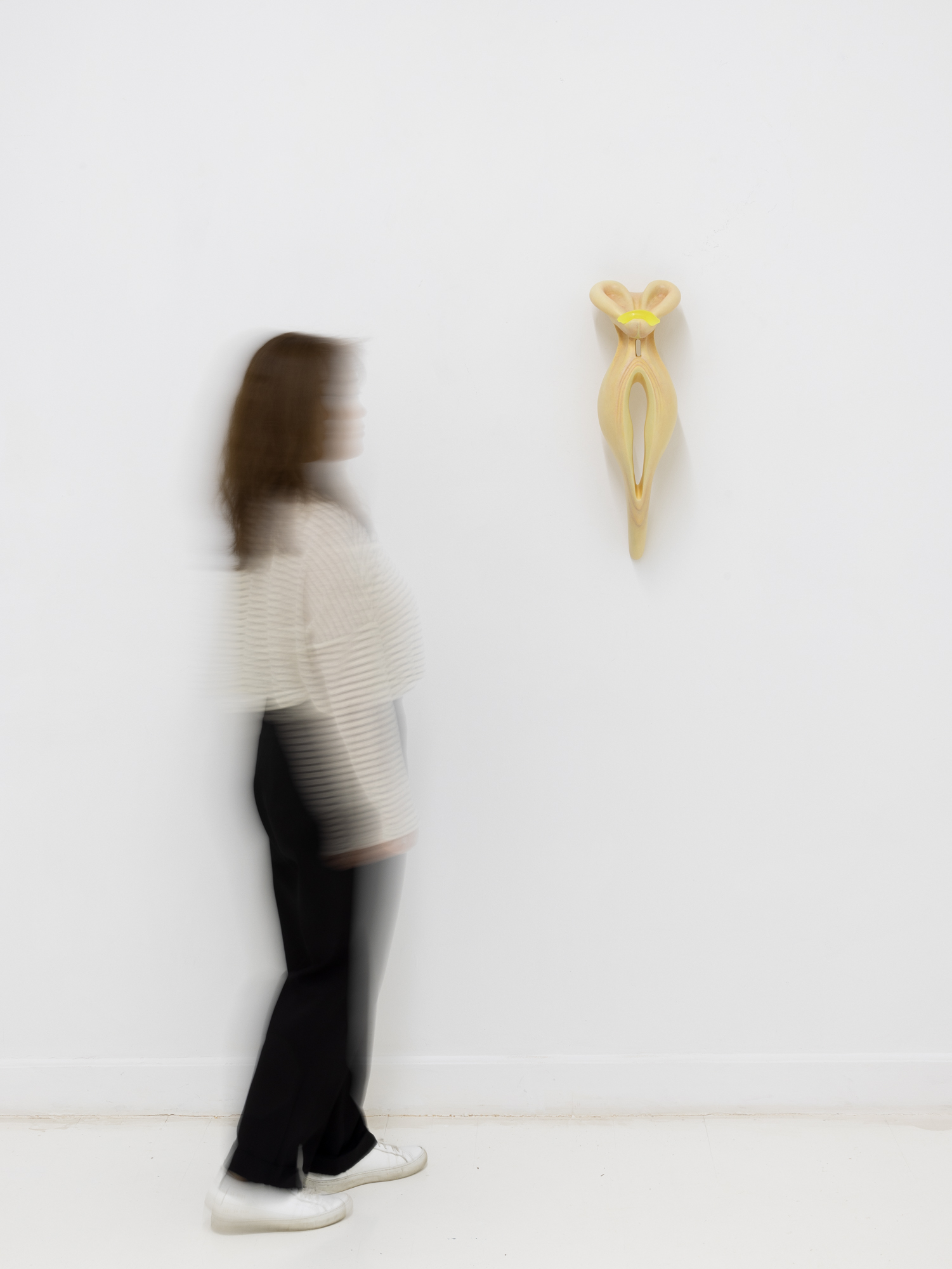Naked
Frieze
New York 2023
Capsule
Shanghai, Booth F7
05/17/2023 — 05/21/2023
The Shed, New York City
![]()
Liao Wen’s (b. 1994 in Chengdu; lives
and works in Hong Kong) solo project "Naked", featuring her latest
free-standing sculptures and wall reliefs. Through her reproduction of bodily
experience, Liao Wen's work reflects the critical state of the mind and the
fragile and tenacious nature of life. In the new body of works on view at
Frieze NY, she expands her exploration of the body inward to the subtle
activities deep beneath the skin, and outward to its social and cultural
implications. Liao integrates her research on human physiological activity,
body posture, and their social significance with analyses of relevant works in
art history. Through her unique sculptural language, she reflects on the
body as the origin of our perception, contemplating how its sensory and
behavioral workings are veiled under the everyday, and how its potential is
activated in certain circumstances, becoming a channel for revolt against
discipline and a carrier for introspection.
Four reliefs from the "Sensation"
series (2023) are installed at different heights on the wall, corresponding to
the height of the respective body parts depicted in the works. Inspired by ancient Roman anatomical votive
statues[1]and deeply affected by pandemic-related restrictions, Liao Wen furthers her
longtime exploration of the body as an object, and the pain and violence inflicted
on it, which was first materialized in her earliest experimental sculptural
series, "The Flesh Store" (2018-2020): Lucid awareness of the
body is often a result of physiological stimulation or injury. In the absence
of pain and suppression, how do we perceive the body's presence in everyday
life?
In the "Sensation" series, Liao Wen
materializes easily neglected bodily activities such as breathing, excretion,
and vomiting through her poetic sculptural language. Compared to the straightforward
representation of the body in pain in "The Flesh Store", the
"Sensation" series is airy and humorous. These works evoke Marcel
Duchamp's mental game in Why Not Sneeze Rose Sélavy? (1921): bodily
perception, objects, and words interact to create an intricate synesthetic
experience. In Throw up (2023), the metal ring tightens around the
torso like a waistband, seemingly squeezing the intracorporal substance upward.Liao Wen deftly uses epoxy resin and jesmonite to represent the textual
nuances of the substance. The steel wire stretched at the top suggests the
futility of suppressing vomiting. Swallow (2023) captures the motion
of swallowing out of thirst. The acid lemony yellow stimulates salivary
secretion through a synesthetic reaction, while the curled "tongue"
and wrinkled "throat" vividly induce the sensation of thirst and the
act of swallowing. Just as “the answer to the question ‘Why not sneeze?’ is
simply that you can't sneeze at will”[2], Liao
Wen’s depiction of involuntary physiological instincts strips the human body
down to its essence – the origin of perception.
The significance of bodily perception lies in
its capacity for transmitting internal and external signals otherwise blocked
by the skin, enabling humans to communicate and coexist with the world beyond
the capsule of our flesh. Two large free-standing sculptures at the booth
shift the perspective outside of the body, focusing on the body's response to
external gaze and events. Using the same approach as the earlier "Almost
Collapsing Balance"
(2020-) series, the artist channels her experience of making and performing
with marionettes into her sculptures to encompass flexible joints and
detachable appendages. Mechanical limits between the joints incarnate a
critical state of the mind, granting the sculptures a balanced structure and a
static momentum. The new works are carved from larger pieces of lumber, which
increases their weight and subsequently the pressure between the joints, while
providing a larger “canvas” to engrave a picture of strength and vitality. Both
elements charge the sculptures with heightened tension.
Stare (2022) depicts a figure examining her own
body. She stands on tiptoe to observe her excreta, creating a bizarre sense of
intimacy. The shock
and uneasiness caused by this predicament of intimacy peak when the work is presented
in the public environment of the fair. The peephole in the wall of the booth
directs the viewers’ eyes to the sculpture, providing a voyeuristic
perspective. The viewers' gaze meets her upward-looking empty eyes, adding
another dimension to the work. The posture can be associated with a mundane yet
secretive moment, or a standing birth posture, and can also be interpreted as
erotic or even defiant. By evoking a complexity of feelings, Liao Wen
invites viewers to rethink when the body stops being a natural organism and becomes
inevitably bound to societal norms and values.
In Headwind (2023), the figure
ferociously resists against an invisible force that seems to be suppressing,
twisting and deforming their body. Their head and limbs deviate extensively from
the body's natural axis, creating a strong sense of motion. The technical
challenge the artist encountered while creating the work is also what she
invites viewers to consider on a metaphysical level: How to maintain
stability and balance in extreme movement and change?
The works on view investigate movement and
transformation on formal and conceptual levels. Similar to the Italian Futurist artists who
valued the potential for transformation in machine and motion, Liao Wen,
through her reconstruction of bodily movement, reflects on the ability and
desire for change inherent in human nature. The slender and elegant
sculptural forms of her earlier works have also morphed into a more
straightforward, daring and potent visual language. The "Sensation"
series shed the spotlight on the otherwise overlooked micro-activities inside
the body, revealing the ever-changing internal universe and its resonance with
the external world. Stare and Headwind fearlessly twist their
figures into extraordinary postures. In movement we transform; through self-transformation,
we strive to change the circumstances. We use our bodies to respond to reality
and challenge norms. We walk into the irreversible river of life with a gesture
of freedom.
[1] The ancient Romans customarily offered
votive sculptures in the shape of body parts (often those in need of healing)
to their gods, in the hope of receiving a cure.
[2] Marcel Duchamp made the seemingly
obvious yet utterly inspiring comment during a French television interview in
1963, shedding light on the mysterious title of his work Why Not Sneeze
Rose Sélavy? Reference: Arturo Schwarz, The Complete Works of Marcel
Duchamp, revised and expanded edition, New York 1997, pp.690-1, reproduced.
廖雯(1994年生于成都,现生活和工作于香港)的个展“赤裸裸”,呈现了她最新创作的圆雕和浮雕。长期以来,廖雯的创作通过重现身体的经验来表现精神的临界状态和生命的脆弱与顽强。在本次展出的新作品中,她将对身体关注的维度向内延伸至肌体深处的微妙活动,向外扩展至其社会文化含义。在创作过程中,她将对于人的生理活动、身体姿态及其社会意义的研究,以及艺术史中相关作品的分析,与她独特的雕塑语言相结合,由此思考身体作为我们感知的原点,其知觉和行为方式是如何隐匿于日常之中,其潜能又在何种情境下被激发,成为反抗规训的通道,成为反思的载体。
展位中四件来自《感知》(2023)系列的浮雕悬挂于墙面的不同高度,分别对应作品所刻画的人体部位的高度。受古罗马还愿塑像1的启发,也深受漫长瘟疫阴霾的抑制,廖雯在这一系列中延续和深入了最早期的实验性系列雕塑《肉铺》(2018-2020)中对于人体作为“物”所可能承受的痛苦和暴力的思考:人往往在受到生理刺激和伤害后,才会强烈地体悟到身体的在场。那么当痛苦和抑制暂缓,我们如何去感知日常身体的在场?
在《感知》系列雕塑中,廖雯用诗意的雕塑语言将呼吸、排泄、呕吐等易被忽视的身体基本活动具像化。相较于《肉铺》中对疼痛肉体的直白展露,《感知》系列是轻松幽默的。这些作品让人想起马歇尔·杜尚在《Why Not Sneeze, Rose Sélavy?》(1921)中进行的游戏:身体知觉、物体和词句在作品中汇聚并发生了微妙的通感反应。在《呕吐》(2023)中,金属圆环如腰带般勒紧躯干,仿佛将体内物质向上挤压。廖雯细腻地使用环氧树脂和水磨石呈现了呕吐物的差别。顶部勒紧的钢丝,则暗示了抑制呕吐的徒劳。《吞咽》(2023)表现了因口渴而吞咽唾液的瞬间。醒目的明亮柠檬黄以联觉的方式刺激唾液的分泌,蜷曲的“舌头”和带有褶皱的“喉部”则生动地唤起口渴的感知和吞咽的动作。正如打喷嚏的行为不受人的意愿支配2,廖雯所关注的人体自发的本能反应将身体回归至其最原始而本质的属性,即感知的生发处。
而身体感知存在的意义在于联通皮肤内外的信号,使人能够与体肤之外的这个世界沟通和共存。展位中两件落地的大型雕塑将视角移至肉身之外,关注身体对于外界目光和事件的回应。它们延续了先前的《临界之躯》(2020-)系列的工作方法:廖雯制作和表演木偶的经验启发了她在雕塑中使用可活动和拆卸的关节。她以关节间的力学极限去表现心灵的临界状态,也以此为雕塑赋予稳定的平衡态和蓄势待发的动感。廖雯在此次展出的新作中对更大体积的木料进行雕刻,这一方面为雕塑增加了重量以加强关节间的压力,另一方面也提供了更大的表面积去创造饱满的肉身感。二者均为雕塑带来了强烈的张力。
《目光》(2022)描绘了一个对自己的身体进行审视的人物。她费力地踮起脚尖观察自己的排泄物,激发出超越日常的私密氛围。这种私密感所带来的不适和震撼在展览现场达到顶峰。展位外墙上的洞正对着这件作品,为观者提供了“窥探”的视角。观者的目光迎上她低头向上凝视的空洞双眼,为作品增添了多层的维度。这个姿态既可以被解读为日常而隐秘的瞬间动作,或者令人联想到站立分娩的体态,又可以被赋予色情的暗示,甚至不乏挑衅的意味。艺术家借由这些复杂感受的萌发,邀请观者思考身体在何种情况下属于自然,又在何时不可避免地与社会和世俗价值捆绑。
《逆风》(2023)中极具表现力的身体似乎被某种不可见的强大力量所压制、扭曲和变形,这具身体的每个关节、每寸筋骨似乎都在用尽气力去抵御这不可抗力。雕塑的头部和肢体极大地偏离了身体的中轴线,这赋予了身体强烈的动感。艺术家在创作这件作品时遇到的技术上的挑战亦是她希望观者在形而上层面去思考的:如何在极端的动态和变化中维持稳定和平衡?
本次展出的作品在形式和立意上聚焦运动和变形。正如意大利未来主义艺术家们注重机械和动态所蕴藏的“变”的潜力,廖雯在新作品中通过表现身体运动的形式,来映射人性中固有的变化的能力和渴求。以往作品中纤细优雅的雕塑结构亦转变为更加大胆直白、饱满有力的视觉语言。《感知》系列通过刻画日常身体内部不易察觉的微小运动来强调身体内部也存在一个瞬息万变的宇宙,且这内在的宇宙和外在的天地相互投射且息息相关。而《目光》和《逆风》则以强有力的姿态,极具勇气地将自身扭转为超乎寻常的状态。我们通过运动去变形,通过变形去转换现时的处境。我们用身体去回应现实,去挑战规训,以自由的姿态迈向不可逆转的生活。
1 在古希腊和古罗马时期,还愿塑像有时被制成仿真的人体部位的形式,并供奉给神灵,用以祈祷受伤病困扰的身体得以康复。
2 马歇尔·杜尚于1963年接受法国某电视台采访时说道:“为何不打个喷嚏?很简单,因为人根本无法凭自己的意愿打喷嚏!”这句简单却耐人寻味的话为其作品《何不打个喷嚏,萝丝·萨拉薇?》(Why Not Sneeze Rose Sélavy?)令人费解的标题提供了些许注释。参考资料:Arturo
Schwarz, The Complete Works of Marcel Duchamp, revised and expanded
edition, New York 1997, pp.690-1, reproduced.





